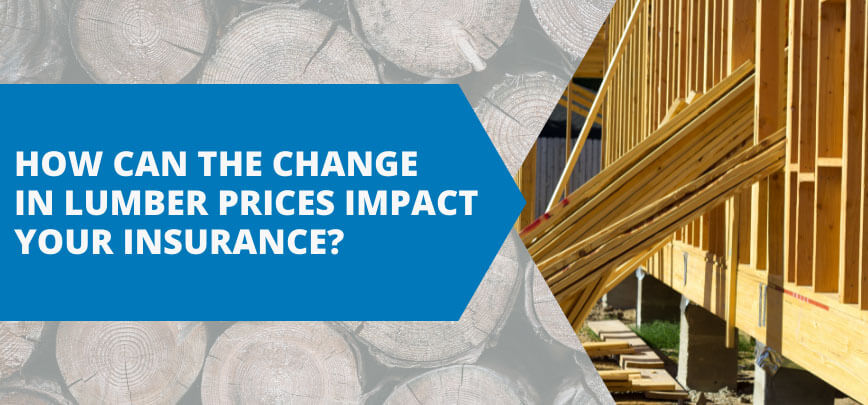
How Increase In Lumber Prices Can Impact Your Insurance
Lumber prices continue to hammer the insurance market. Since the onset of COVID-19, there has been a steady increase in lumber and other construction material prices, coupled with a decreasing supply. The pandemic resulted in many people renovating their homes and outdoor space. According to Statistics Canada, softwood lumber prices alone have risen 118.9% in Canada between March 2020 and March 2021. Mills are unable to keep up with the demand as they have had to shut down at various times in an effort to stop the spread of the virus.
The rising cost of construction materials may leave your building underinsured without your knowledge. The unfortunate nature of being underinsured is the problem only presents itself when a claim is filed. If your home or business is damaged by fire, flood, or another type of disaster, the process involves an adjuster coming to the scene for an evaluation. In cases where you don’t have enough coverage, and the cost to repair the damage is more than what you’re insured for, the homeowner may be responsible to pay the balance out of pocket. The issue is made more complicated today by the overinflated prices of lumber. For example, Canadian homes are 90% wood framing. If your home endures a fire, your policy may have the correct value of the building but not high enough to cover all the rebuild costs based on today’s prices. The same logic applies to farms and businesses as well.
How can you avoid being left under-insured?
Insurance companies have built in an inflation factor to all Personal Property policies. This inflation factor is adjusted over time to take into consideration the fluctuation of prices in the construction industry.
We have seen several of our insurance companies implement a small increase in the building inflation factor for personal homeowners and rented dwelling risks to address these trends. We are encouraging all clients to speak with their Merit Broker to discuss the current details of their policy to ensure you have the coverage you need.
Most home insurance policies include Guaranteed Replacement Cost (GRC), but to qualify for this coverage the following must apply:
- You agree to insure the house to 100% of its replacement cost, agreed to or determined by the insurance company.
- The limit is increased on renewal by an inflationary percentage established by the insurance company.
- The limit is not reduced below the amount determined by the valuation guide.
- Notification to the insurance company within 90 days of the start of work if you make additions or improvements to your residence that would increase its replacement cost by $10,000 or more.
- If replacement is not made on the same site, any increased cost caused by replacement at new premises is not covered.
- Repair or replacement must be made within 1 year from the date of the loss (unless otherwise agreed to).
- With respect to log or stone construction, or houses with a Heritage designation, the insurance company reserves the right to substitute with comparable materials.
If you do not elect to exercise the Replacement Cost Basis of Claim Payment or if any applicable condition above is breached, the Actual Cash Value basis of claim settlement will apply.
Actual cash value basis
This basis of settlement will be the cost to repair or replace the lost or damaged property, whichever is less, with new materials of a similar kind, quality, and usefulness, but with proper deduction for depreciation.
In determining the proper deduction for depreciation, the following is taken into consideration:
- The condition of the property immediately before the loss or damage;
- The use of the property;
- Its resale value; and
- It’s normal life expectancy.
Don’t let your wallet get nailed with unexpected insurance claims and call your Merit Broker today!



